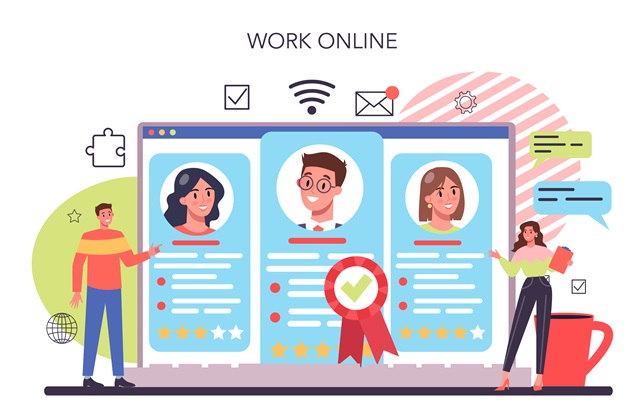Employee recognition programs: 5 Effective Appreciation Ideas

The majority of people find it enjoyable to be recognized for their efforts, but does appreciation have any practical advantages in the job? If yes, how would you go about achieving it? Nearly 80% of workers who left their positions report a lack of value as their primary reason, according to research on employee appreciation. Obviously, appreciation matters. Even while we are aware of how important gratitude is for employee retention and productivity, really cultivating it can be difficult. A well-designed, customized expression of gratitude goes a long way toward keeping talent on staff. Employee recognition programs have been shown to raise engagement, morale, and reduce turnover.
But many recognition programs come across as self-serving or even inauthentic; trust us, your employees will see right through “special rewards” that are contingent on meeting targets. Get inventive, keep programs current and relevant to the workplace, and combine team and individual rewards wisely to save your program from that destiny.
Here are five quick, cheap, and efficient ways to show your staff how much they mean to the business and thank them for a job well done.
Honor Employee Recognition Day
Employee Appreciation Day is on March 1st. This is an ideal chance to honor the hard work of committed employees at your business. It’s also a good time to have a more general discussion about gratitude, including why it matters and how we may practice it more. Employees that only get acknowledgment from bosses a few times a year include the following, per one study:
- 5 times more likely to be actively uninvolved
- 27% more likely to be struggling
- 74% more likely to indicate they do not want to stay at the company in a year
It might be as basic as managers finding it difficult to come up with ideas for staff appreciation days that don’t sound forced.
Having dinner together might be a great way to start a casual discussion. A staff potluck or even just organizing a conversation over a box of your office’s favorite treats during a coffee break are usually good options if money is tight. Find a way to make the day matter, even if it’s just for a little aside moment.
Establish A Recognition Culture
It is most effective when high performance is acknowledged regularly and naturally. Consistent expression of thankfulness (monetarily or not) enhances prosocial interaction—an attitude in which people cooperate to accomplish a common objective—and builds relationships. When recognition is done via monetary incentives, a paystub maker is a great tool to use. It helps you keep track of your employees’ income reports, and based on that, you can better identify what monetary incentive to use.
A straightforward management tactic is to recognize significant accomplishments in routine staff meetings. But showing appreciation doesn’t have to happen simply from the top down. Using the communication equivalent of a one-way street, expressing gratitude to employees in writing and making it public can seem less natural and sincere than doing so. Crowdsourced high fives are an added benefit that honor accomplishments from every level of your organization. Making sure that appreciation is a dynamic, living component of your organization’s culture can be achieved in part by documenting the complete range of your successes.
Send A Short Note of Appreciation
Additionally, there is merit to the straightforward, practical act of expressing gratitude. It’s often more effective to quietly thank someone for a job well done outside of a group gathering, which lacks the formal corporate atmosphere.
The next time you run across a high achiever in the hallway or elevator, say “thank you” sincerely to let them know that you appreciate what they’ve done. There is also the excellent, old-fashioned option of a handwritten thank-you note, which is sometimes easy to ignore in this era of instantaneous virtual communication.
Whichever kind of gesture you prefer, the important thing is to make it genuine and targeted. It lacks confidence to say something like, “Hey, great job for all that work you’re doing!”
Provide chances for career development
Opportunities for career advancement can benefit both parties. They provide a driven worker with an opportunity to advance and develop inside the organization. They also offer a crucial means of expanding the pool of knowledge and experience within your business.
Offerings for technical or leadership training are evident benefits for professional growth. On the other hand, you may also think about offering an employee the chance to represent your business at public gatherings or involve them in prominent events that provide them more exposure to senior personnel. There are times when material possibilities and favorable job outcomes are the greatest ways to show gratitude.
Respect a Worker’s Personal Life
When a worker puts forth extra effort for their employer, they often sacrifice their free time and personal time. Ideas for family-oriented employee appreciation gifts can be a wonderful way to show someone you recognize and value their sacrifices.
More practically speaking, hiring a car or house cleaner can be a really effective method to leave a lasting impression. You can also look into a ton of entertaining, customized possibilities. How about a bouquet of flowers or a few movie tickets? This is your chance to be inventive and choose a gesture that matches the hobbies and character of your employee. There is also the gift of time itself. Giving employees more time off or flexible work schedules demonstrates to them that you value and recognize their time commitment.
Finding a workplace thankfulness strategy that works for each individual is the biggest obstacle. Using the techniques in this post is a wonderful way to start introducing genuine thankfulness into your business.